Category: General

First look: 2026 Mercedes-Benz CLA EV, hybrid split the bill
- Battery-electric CLA 250+, CLA 350 arrive first
- Non-PHEV CLA hybrid coming in a year
- EVs have 800-volt architecture, 320-kw max charging
Mercedes-Benz will kick off the replacement of all its global small cars this year—and when they do, all the models coming to the U.S. will sport some sort of electrification. But some will be more electric than others.
Battery-electric CLAs will be the first of the new generation of compact cars to arrive late in 2025. They’ll be followed by a CLA hybrid about a year after that, with replacements for the GLA-Class hatchback and GLB-Class yet to come.
Not part of the current plan: plug-in hybrids.
Instead, the MMA componentry will be BEV-first, said Christoph Starzynski, Vice President Product Strategy and Product Steering Mercedes-Benz Cars, while a non-plug-in hybrid will follow.
It’s a strategy that has been in the works since the MMA program, Starzynski told Green Car Reports. The blend of EV and ICE models was the way MMA “was always planned as a platform or architecture,” he said during a recent roundtable in Sindelfingen, during a press preview of the new range.
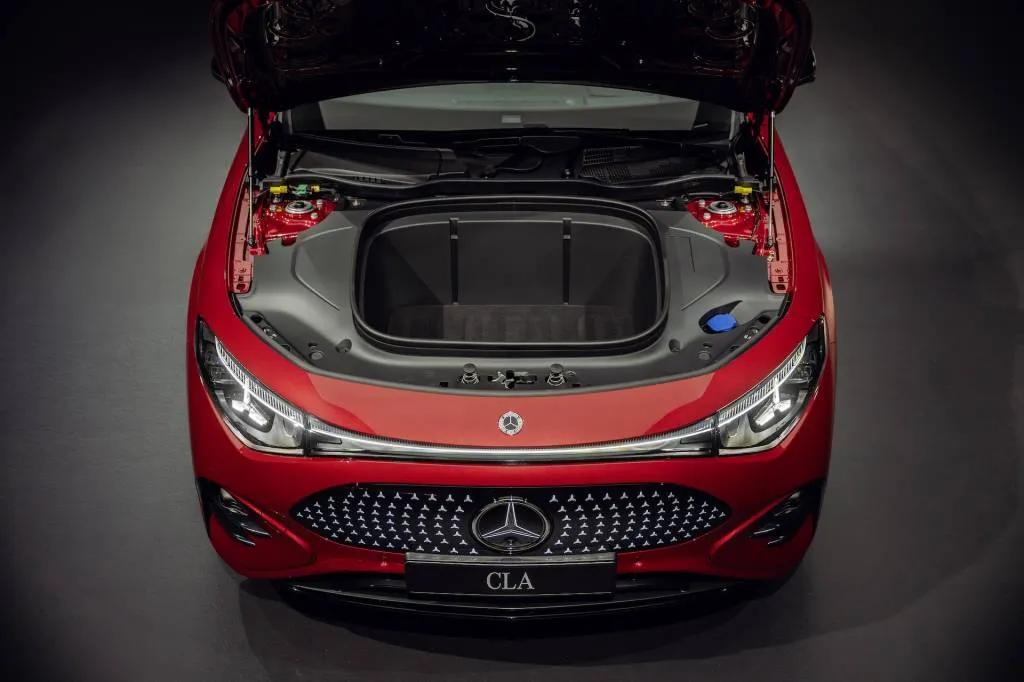
2026 Mercedes-Benz CLA-Class
CLA EV: An 85.5-kwh core, with a motor or two
While the revamped CLA-Class grows larger and more technologically complex, it’s drawn closer to a few new nameplates in the EV space. Some aging products aside, the cars the CLA now competes with most directly include mass-market machines like the Toyota Prius and the Hyundai Ioniq 6.
With rivals like those, the 2026 CLA had to have an efficient battery at its heart. For the past few years, Mercedes has been maturing its EV technology with a series of concepts, starting with the recent EQXX concept.
Both a single-motor and a dual-motor CLA will be offered. The CLA 250+ rear-drive, single-motor sedan rides atop an 85.5-kwh (usable) lithium-ion battery pack. It’s rated at 268 hp, and Mercedes predicts a 0-60 mph time of 6.6 seconds.
With a second 107-hp motor in front, the CLA 350 4Matic will offer all-wheel drive and a quicker acceleration time of 4.8 seconds. The front motor will be decoupled when not in use, for better efficiency, an effort that’s in concert with a heat pump and a low 0.21 coefficient of drag.
The 800-volt architecture of the CLA permits a charge rate of up to 320 kw, which could return 186 miles of range in 10 minutes on a DC fast charger. No estimates have been published for home Level 2 charging via its 11-kw onboard inverter. Based on WLTP ranges, it’s likely the most CLA 250+ will carry at least a 300-mile EPA rated range—perhaps much higher.
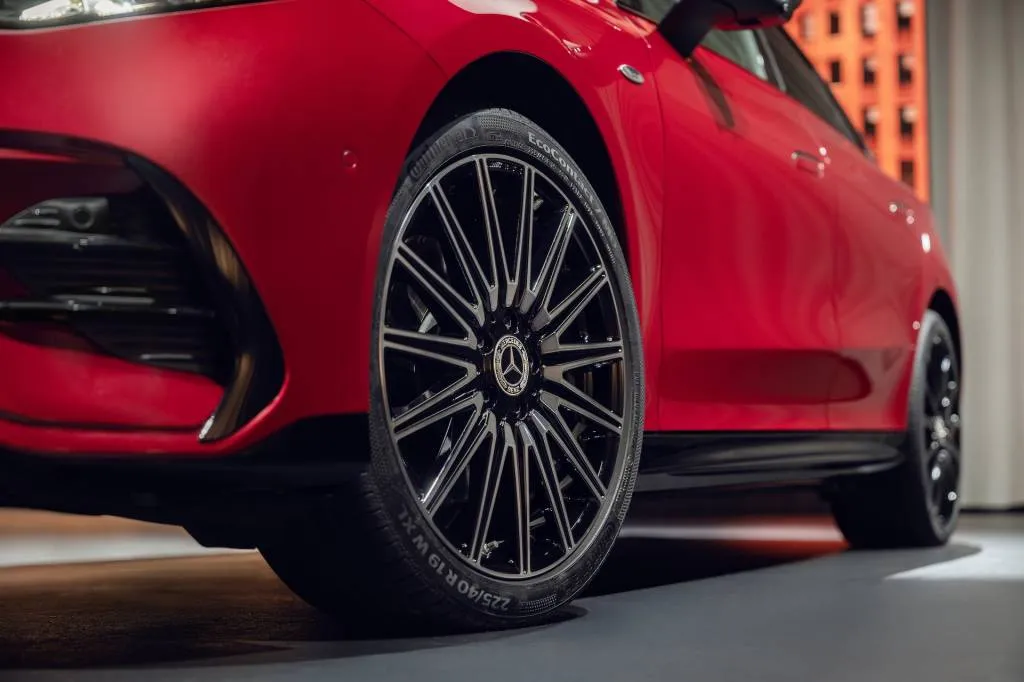
2026 Mercedes-Benz CLA-Class
The CLA will benefit from a reworked regenerative braking system that avoids the pitfalls of that on the EQE and EQS cars. Instead of moving the pedal in response to regenerative braking, it will read the pressure applied to the pedal and blend regen and friction braking for a more smoothly combined force.
The CLA EV will have four regen modes—including a one-pedal drive mode. It’s “not something I’m a fan of,” Starzynski said, but customers wanted it.
With its 800-volt design, the CLA presents a question for charging in the U.S., where 400-volt Tesla stations are the most commonly available. Mercedes cars will be able to access the Ionna charging network that it’s a partner in, but Starzynski did not confirm how Mercedes would handle the compatibility of those 400-volt charging stations.
“If we see a market demand for 400 volts in the United States when the car hits the market,” he said, “then we will also find a solution.”
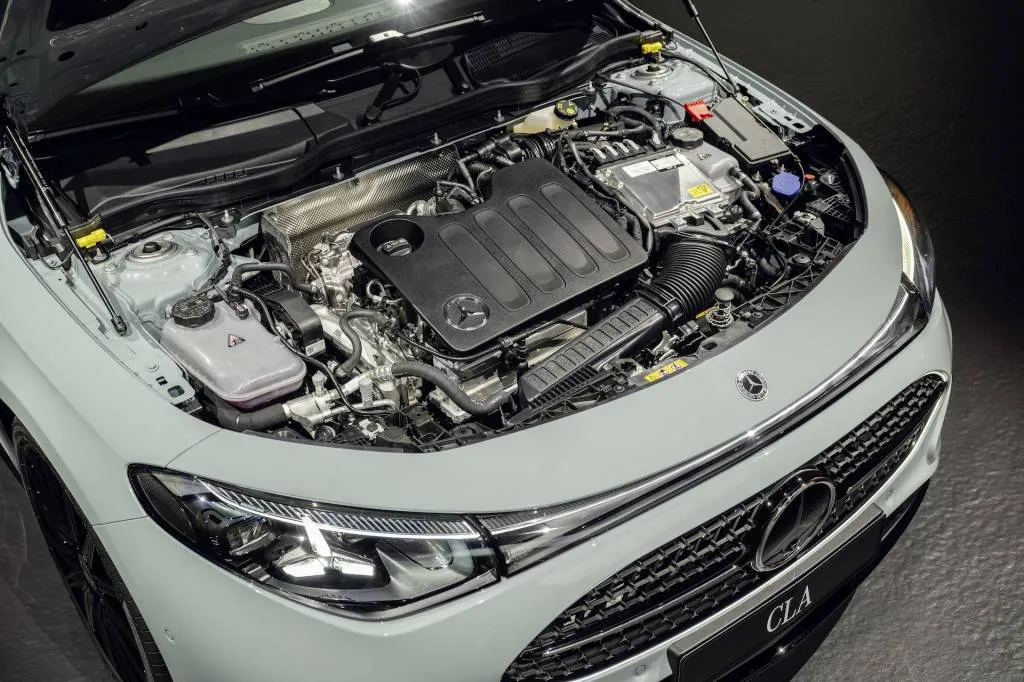
2026 Mercedes-Benz CLA-Class
2026 Mercedes-Benz CLA-Class: Gas-electric hybrid, minus the plug
Starzynski said the BEV-first design has resulted in a better ICE vehicle than might have been developed. That ICE hybrid arrives about a year after the battery-electric CLA sedan. In it, a 1.5-liter 4-cylinder will be mated to a 1.3-kwh battery pack, and to a 27-hp front motor integrated with an 8-speed dual-clutch automatic. No performance numbers or fuel-economy figures have been mooted, but Starzynski confirmed the CLA hybrid would be able to rely on its hybrid battery to allow the car to cruise on battery power alone at speeds of up to 60 mph.
The CLA hybrid will have electric drive range—just “not something you can certify,” Starzynski said—but there are no plans to come up with a “third way” solution for the car.
As a BEV or HEV, but not a PHEV, the CLA will remain one of the only, if not the only, Mercedes model to do so. A plug-in hybrid in this price and size class wouldn’t be a good choice, he suggested. In larger vehicles that require a more powerful drivetrain, plug-ins are a good “bridging scenario,” he explained. Given the possible cost and range trade-off, customers haven’t been clamoring for a CLA-sized PHEV—but for vehicles such as the GLC 350e plug-in hybrid now on sale in the U.S., the bridge to full-BEV driving is “definitely a strategy we want to keep.”
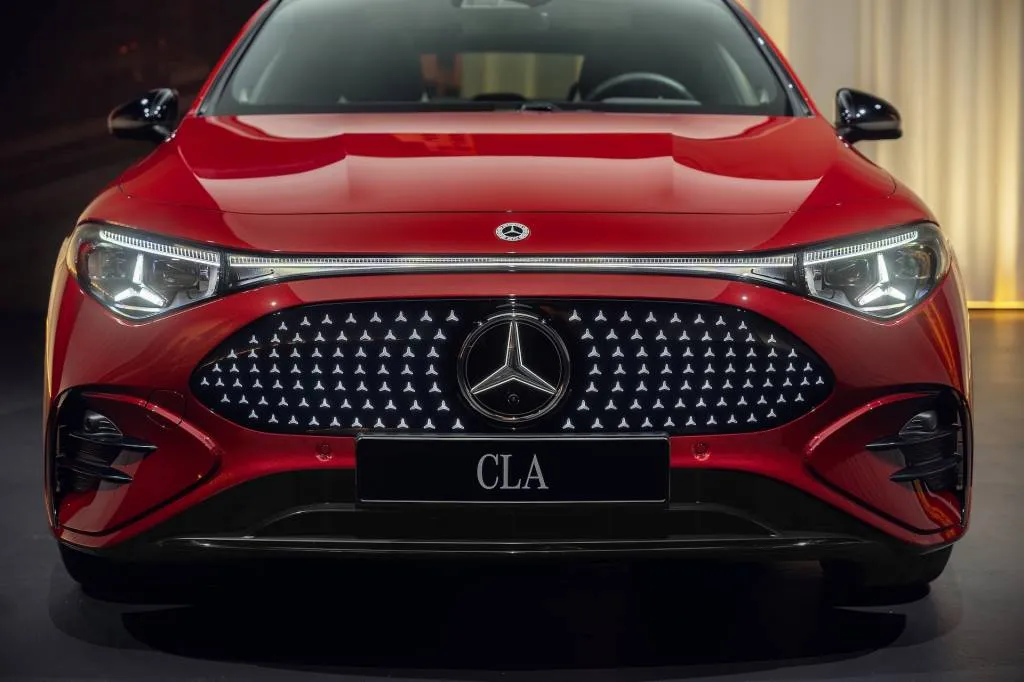
2026 Mercedes-Benz CLA-Class
2026 Mercedes-Benz CLA-Class styling, space, and tech
The 2026 CLA—both electric and hybrid models—get lots of stars in their visual language in this generation. With a more pronounced wedge in its stance, the CLA EV wears 142 tiny three-pointed stars on its face, a big lighted one front and center, and more in the headlights and taillights.
The wide-screen technology inside counts as another star, by any measure. A trio of digital displays marry under a pane of glass to create the “Superscreen,” a companion to the more expansive Hyperscreen in today’s EQE and EQS cars. The overpowering presence of the displays in the compact CLA might play better on the GLB SUV replacement yet to come—it’s a high-cowl, SUV-like dash shape, period—but the new interface plays well no matter who’s in the audience. It’s an immersive experience dubbed MB.OS, and it permits drivers to reorder apps on the home screen as they see fit, to swipe through screens like on a tablet, and to go full-screen with Apple CarPlay if they prefer that environment.
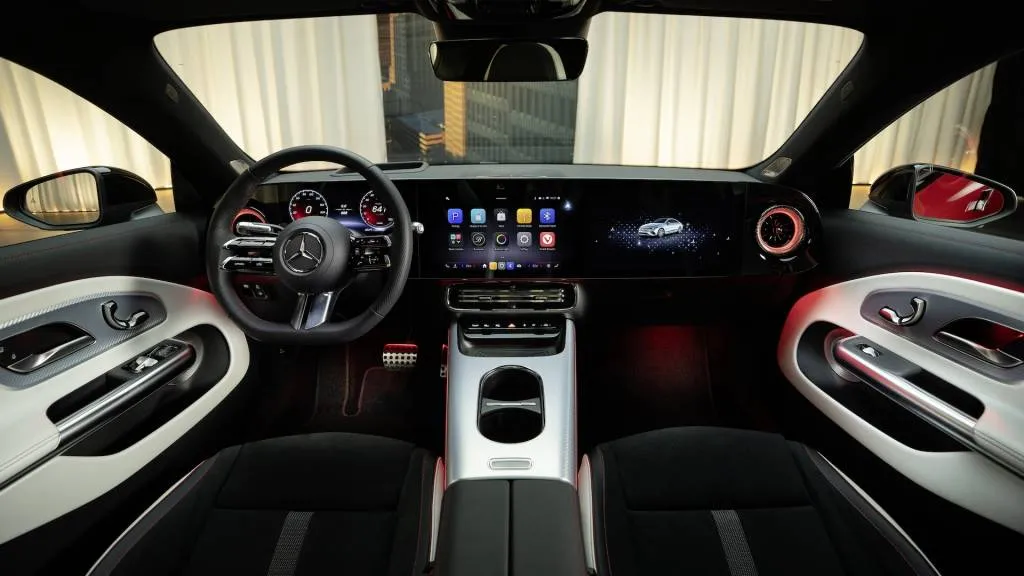
2026 Mercedes-Benz CLA-Class
MB.OS factors in Google map data through a Mercedes-coded look and feel that even integrates lighting and voice quality to soothe the driver. If the voice-command system recognizes a tersely worded request, it can match the energy by dialing the car’s lighting from a cool blue to a vivid red, for example.
All CLAs will sport a bundle of safety features including adaptive cruise control. A Level 2 driver assistance setup will come as an option, aided by an in-car network of eight cameras, five radar sensors, and 12 ultrasonic sensors, as well as over-the-air updates.
Prices will be confirmed closer to the on-sale date, later this year. For comparison, the current CLA 250 costs $45,550. Expect more of everything, especially price—especially in the current EV-unfriendly political climate.
Mercedes-Benz paid for travel so that we could bring you this first look of the 2026 CLA-Class.

Northvolt goes bankrupt, Swedish battery maker collapses in Europe
Once hyped as a potential cornerstone for an expanded European battery industry, Swedish battery maker Northvolt on Wednesday announced that it was filing for bankruptcy in its home country.
“Like many companies in the battery sector, Northvolt has experienced a series of compounding challenges in recent months that eroded its financial position, including rising capital costs, geopolitical instability, subsequent supply chain disruptions, and shifts in market demand,” the company said in a press release. “Further to this backdrop, the company has faced significant internal challenges in its ramp-up of production.”

Rendering of Northvolt Six battery factory in Quebec, Canada
In recent months, Northvolt has made several attempts to shore up its financial position, including filing for Chapter 11 bankruptcy in the U.S. and cutting costs throughout its business. However, the company said it was not able to secure the additional funding it needed to continue operating.
In accordance with Swedish law, a court-appointed trustee will now oversee the sale of Northvolt’s business and assets in order to settle the company’s outstanding financial obligations.

Volvo and Northvolt partner on battery development and production
Northvolt opened its first battery factory in Sweden in 2021, and that year claimed to be making cells with 100% recycled nickel, manganese, and cobalt. Battery-supply deals with BMW and Volvo soon followed, as well as plans for additional factories, stoking hopes that Northvolt could grow into a local competitor to established battery firms serving European automakers.
But that first plant never reached full production capacity, Reuters reported last year, around the time that BMW nixed its battery-supply deal with Northvolt, estimated to be worth about $2 billion. Layoffs followed, along with the resignation of CEO Peter Carlsson.

California GM EV owners could see $4,500 off home-backup hardware
- Participation can All 2025 GM EVs eligible soon; a mix of 2024 and 2025 models eligible now
- Additional incentives if owners opt to suspend charging during high-load times
- Could help lay groundwork for future V2G program
General Motors electric vehicle owners in certain parts of California could receive a $4,500 discount on home-backup power hardware as part of a pilot program with utility Pacific Gas & Electric (PG&E).
Announced Thursday, the program aims to evaluate the use of the bidirectional charging capability built into many new GM EVs to help power homes, and potentially help support the grid, applications known as vehicle-to-home (V2H) and vehicle-to-grid (V2G), respectively. Discounted hardware will be one of the participation incentives for GM EV-owning PG&E customers.
The program will provide “incentivized pricing for qualifying GM Energy home energy products” to customers within PG&E’s service area, which includes Northern and Central California, the release said.

Cadillac Escalade IQ and GM Home Energy suite
GM first detailed the hardware it’s using for home power backup in 2023, based around a particular wallbox it calls the PowerShift Charger, plus an Enablement Kit with inverter and “dark start” battery. Then last fall it rolled out its PowerBank home energy storage—although for now this hardware can’t be mixed and matched with hardware on other ecosystems like Tesla.
The automaker has said that all of its latest EVs, previously badged Ultium, are bidirectional-capable, with expanded capabilities to be potentially rolled out via software updates in the future. It expects all 2025-model-year EVs to be eligible for the program “soon,” but so far is only confirming the 2024 Chevrolet Silverado EV, 2024 Chevrolet Blazer EV, 2024 Chevrolet Equinox EV, 2024 GMC Sierra EV, and both 2024 and 2025 Cadillac Lyriq models.
Participants can also earn additional incentives by opting into “planned backup power events” and staying enrolled through the end of the program. Participating EV owners must also be registered in PG&E’s Emergency Load Reduction Program, and can earn additional incentives by choosing to stop charging their EVs during coordinated times as well.
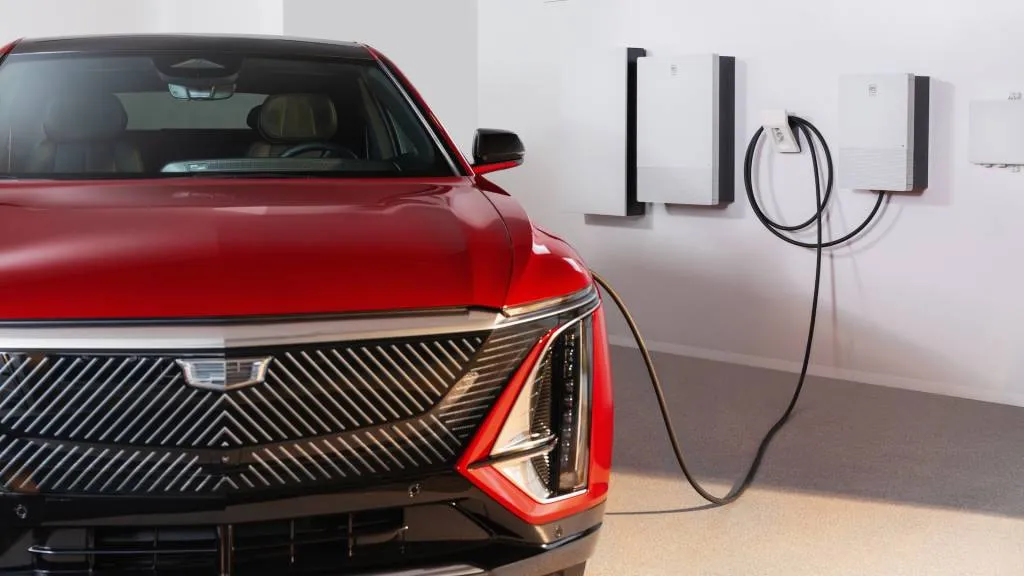
Cadillac Lyriq and GM Home Energy suite
GM and PG&E will collect data on participants’ charging patterns to “evaluate the potential for bidirectional technology to provide value to customers, support grid resiliency, and help scale bidirectional technology programs in California,” the release said. While the focus is on using EVs to provide home backup power for now, it could help lay the groundwork for using EVs to support the grid.
Ford has offered a bidirectional system for the F-150 Lightning for several years, although it’s focused on home backup and not the grid aspects highlighted with this announcement. The only manufacturer-approved V2G charger enabled now, beyond pilot programs, is the Fermata FE-20 for the Nissan Leaf.

Rivian unlocks hands-free driving, dual-motor performance upgrade
Rivian on Tuesday confirmed a number of new software-enabled features for its R1S electric SUV and R1T electric pickup truck, enabled with its latest over-the-air software update 2025.06.
For Gen 2 vehicles (2025 model year and beyond), Rivian is launching a hands-free driver assist system known as Enhanced Highway Assist. Like Rivian’s previous Highway Assist system, it can control steering, acceleration, and braking on divided highways, but now drivers can take their hands off the wheel for extended periods, Rivian promises.
The automaker is also enabling Rally Mode for more vehicles—in this case, for Performance Dual-Motor models. Already available on other R1 variants, Rally Mode heightens throttle response and provides crisper steering within the R1 models’ Off-Road mode.
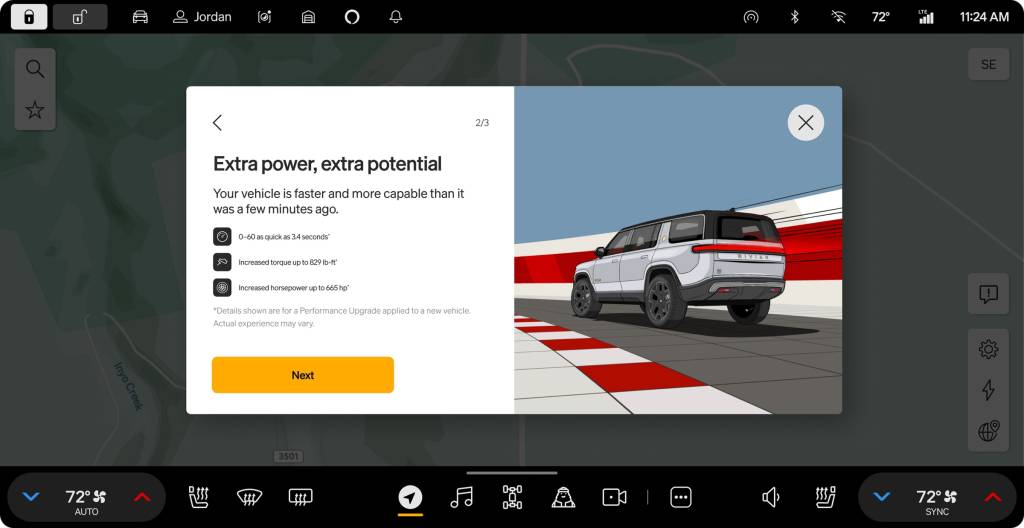
Rivian Performance Upgrade (extra cost)
Rivian also confirmed that its Performance Upgrade for Dual-Motor models with the Standard+, Large, and Max battery packs is available, at the previously disclosed cost of $5,000. This boosts output to 665 hp and 829 lb-ft of torque while adding three drive modes—Sport, Rally, and Soft Sand.
A previously discussed update for wheel swaps has also been enabled, allowing owners to register aftermarket wheel-and-tire setups in a vehicle’s settings menu for more accurate range estimates.
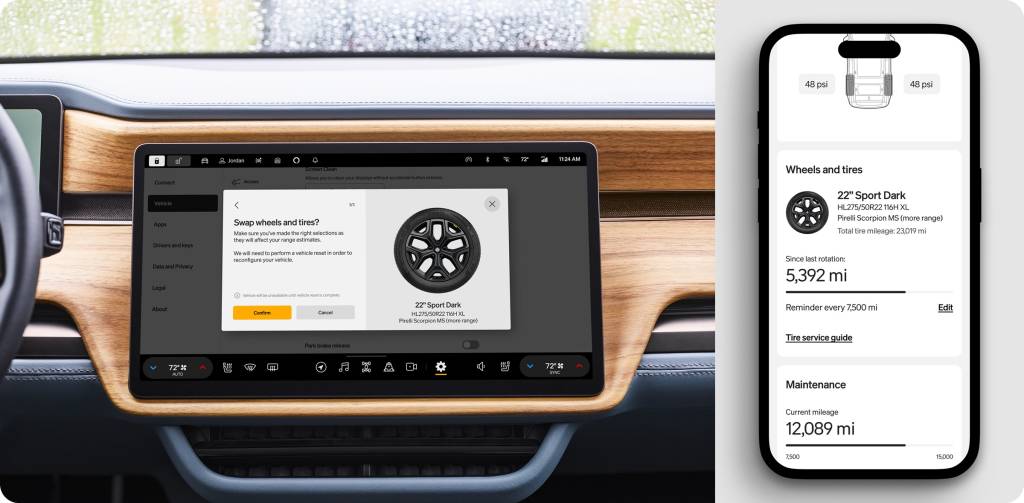
Rivian wheel swap UI
Other updates include a chime that sounds when the vehicle ahead moves—cueing drivers to start moving after being stopped at intersections—side mirror tilt-down when vehicles are shifted into reverse, the ability to close charge port doors via Rivian’s mobile app, and tire puncture detection. Most of the these features will be available on both Gen 2 and earlier Gen 1 models immediately; the chime feature will initially be available on Gen 2 models and will roll out to Gen 1 vehicles at a later date.

Ford EVs getting Tesla Supercharger route planning via Apple Maps
Now that it’s rolling out adapters that allow its electric vehicles to charge at Tesla Supercharger stations, Ford is streamlining things for Apple iPhone users that want to navigate to them.
The automaker on Monday announced that Mustang Mach-E and F-150 Lightning drivers using Apple Maps EV route planning, via Apple CarPlay, can now specify a Tesla Supercharger or other North American Charging Standard (NACS) DC fast charger.
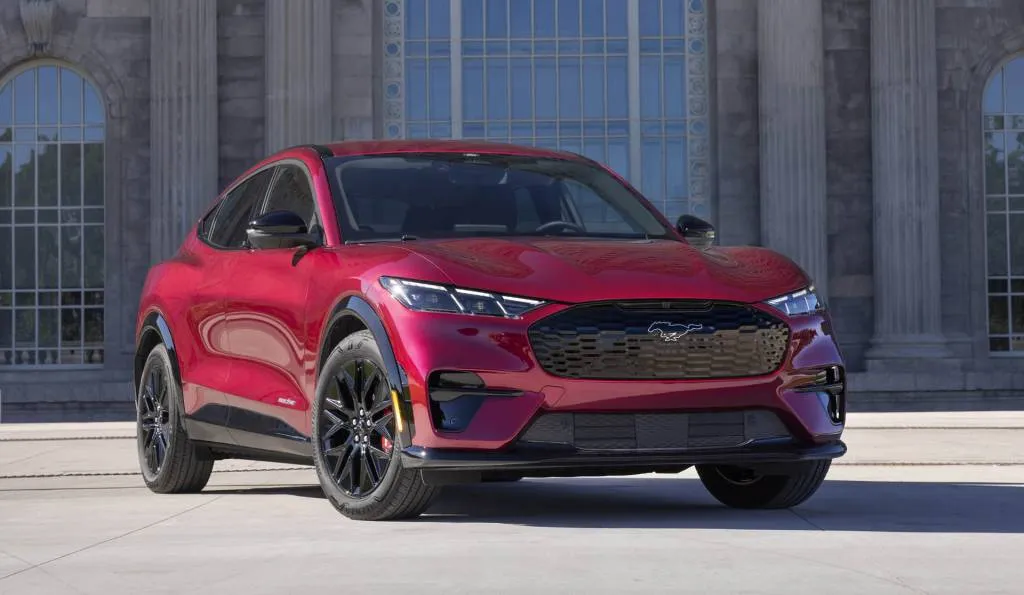
2025 Ford Mustang Mach-E (Premium with Sport Appearance Package)
Drivers can now select NACS as a preference in the settings menu of Apple Maps and then be automatically routed to stations using that connector type, according to Ford. The automaker said that, previously, getting equivalent results required manually entering a Supercharger site as a navigation destination.
This functionality is available with iOS 17 and later versions of Apple’s mobile operating system, and doesn’t require any software updates to the vehicle itself, according to Ford. Adapters that let Ford EV owners use Tesla charging have been available since early 2024.
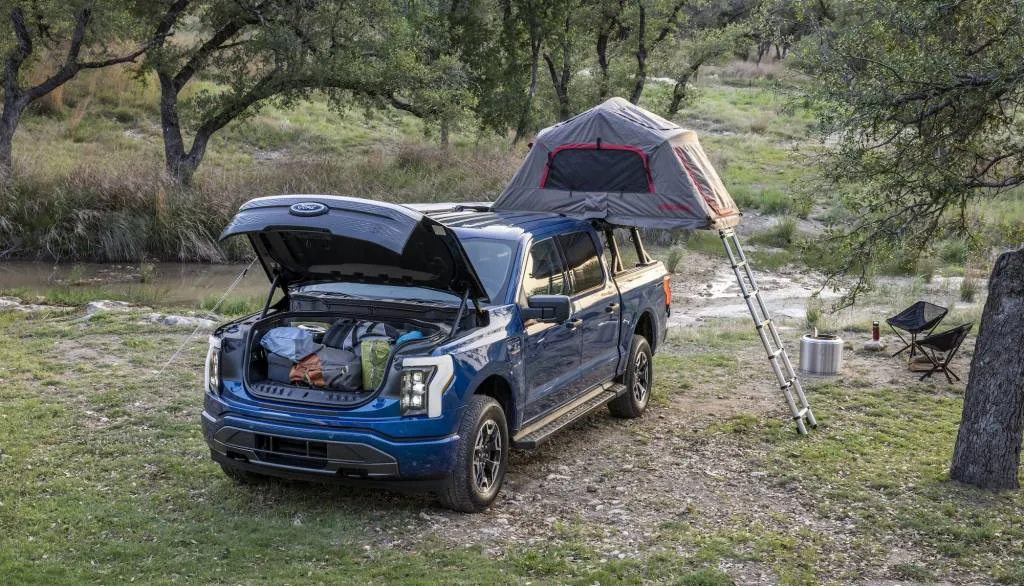
2025 Ford F-150 Lightning
Ford launched Apple Maps EV route planning for the Mach-E and Lightning in 2023. It announced similar functionality for Google Maps and Android Auto at CES 2024, rolling it out later in the year, with the capability to show Tesla Supercharger stations from the get-go.
Ford emphasized that Apple Maps EV route planning encompasses all NACS chargers—not just Superchargers. While there aren’t many non-Tesla NACS fast-chargers right now, that could change with the continued buildout of the Ionna network. Backed by eight automakers (not including Ford), Ionna aims for 30,000 charging connectors by 2030, with a mix of NACS and Combined Charging Standard (CCS) types.

Toyota updates bZ4X with more power, faster charging
- An updated bZ4X joins the C-HR+ and Urban Cruiser in Toyota’s European EV push
- A smaller 57.7-kwh pack option gives European consumers more choice
- Battery preconditioning and a more powerful motor highlight the midsize crossover’s changes
The Toyota bZ4X electric crossover receives its first significant update with battery preconditioning, more powerful motors, and a larger touchscreen. Toyota announced the changes for the European market on Tuesday, but many of those changes are expected to follow in the North American market as well.
During a press conference in Brussels last week, Toyota showed off the midsize bZ4X as well as two new electric crossovers, including the Toyota C-HR+ compact crossover in the C-segment and the smaller boxier Urban Cruiser for the B-segment. The three electric crossovers make up half of the six new electric vehicles launching in Europe by the end of 2026.
A slide showing the silhouettes of the remaining three vehicles suggest a pickup truck likely to be a Hilux EV; a larger, more luxurious crossover believed to be a Land Cruiser EV; and a smaller crossover sized like the Urban Cruiser but with more of a hatchback profile.
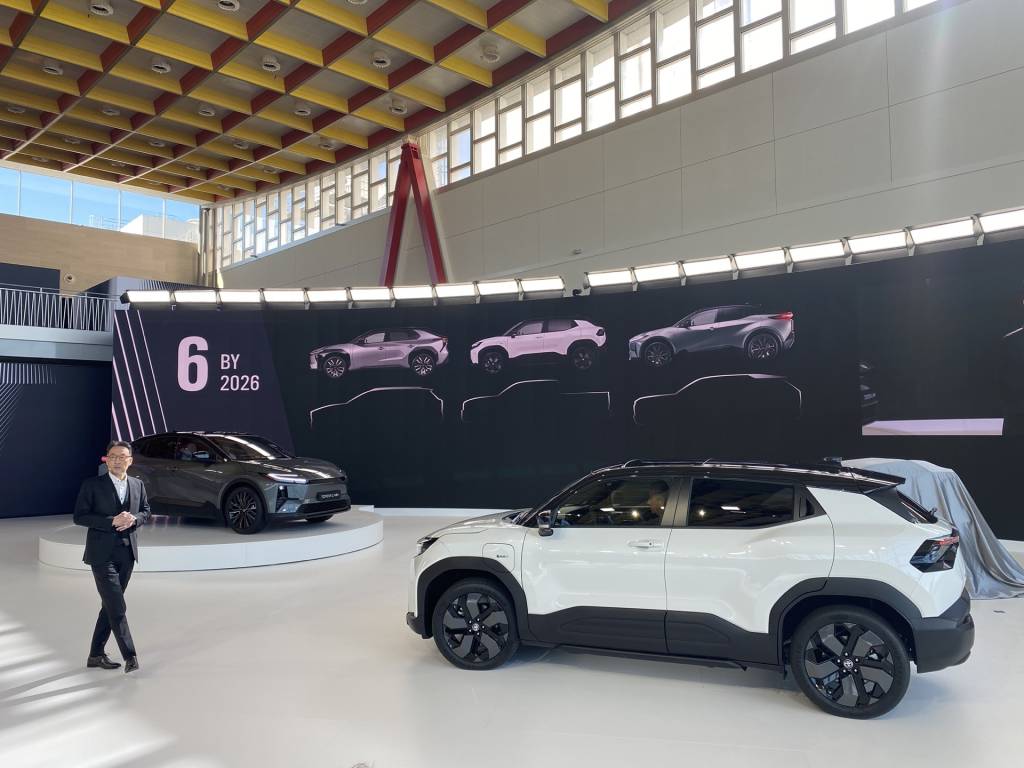
Toyota Urban Cruiser
The product showcase highlighted Toyota’s push to carbon neutrality in Europe by 2035 through a multi-energy strategy that includes hybrid, plug-in hybrid, battery electric, and hydrogen fuel-cell technologies.
The bZ4X’s modest enhancements should provide enhanced appeal. A smaller 57.7-kwh battery pack will be offered alongside a 73.1-kwh (gross capacity) battery pack that gets a blip in capacity from the 71.4-kwh pack currently sold in Europe and in single-motor versions in North America. That pack uses cells supplied in a joint venture with Panasonic as part of Toyota’s Prime Planet Energy & Solutions (PPES). Last September, LG Chem agreed to supply cathode materials for Toyota’s battery production. Toyota did not disclose the reason for the difference in gross capacity.
In North America, dual-motor all-wheel-drive models use CATL cells in a 72.8-kwh pack.
The new 57.7-kwh pack comes with front-wheel drive only and a single motor rated at 123 kw (164 hp). Models with the 73.1-kwh pack come with either front-wheel or all-wheel drive, but the motors now use silicon carbide semiconductors that boost power output to 165 kw (221 hp) from 150 kw (201 hp) in the single front motor or 252 kw (338 hp) from 160 kw (214 hp) for the dual-motor setup. Suspension tweaks promise to lower noise and vibration levels.
Dual-motor models can now tow double the previous capacity, up to 3,300 pounds.
Toyota also debuted a new F Sport grade on the related Lexus RZ, and that sportier model will have 221-hp motors on both the front and rear axles.
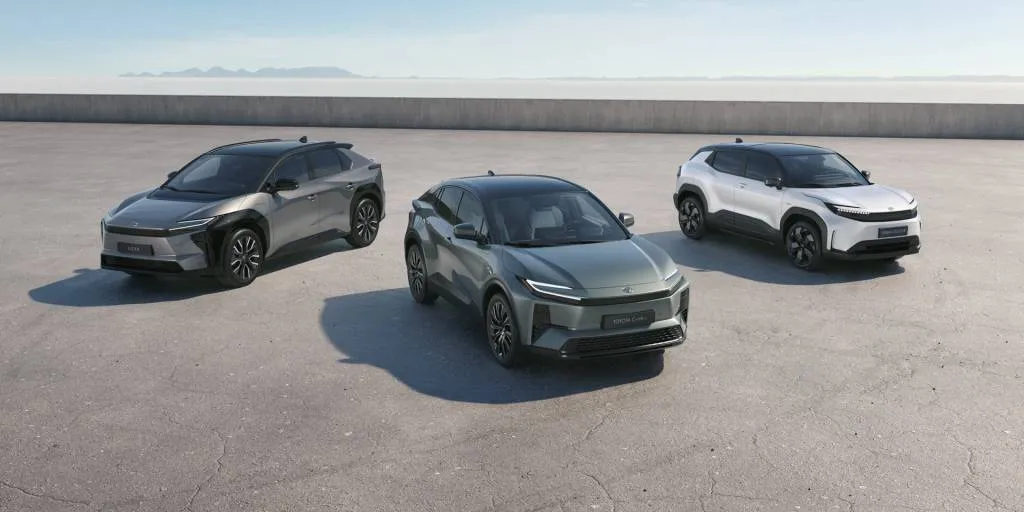
Toyota bZ4X, C-HR+, Urban Cruiser, from left to right
Toyota wouldn’t disclose more detailed specs on the updated bZ4X. Estimated range for the 73.1-kwh front-wheel-drive model is 356 miles on the generous European WLTP cycle.
More significantly, an available 22-kw onboard charger on top models should significantly cut down the roughly nine-hour charging time with the current 6.6-kw charger on a 240-volt outlet. The max power for DC fast charging remains 150 kw. Battery pre-conditioning now comes standard to optimize max charging power.
Toyota claims improved aerodynamics due to minor updates to the front fascia, but bigger and welcome changes happen inside. Tilting or telescoping the small diameter steering wheel no longer moves the recessed instrument cluster near the base of the windshield. The cluster appears brighter, better organized, and larger, though Toyota reps said it’s not larger. A 14.0-inch touchscreen that looks identical to the head unit designed in North America and used in Lexus and top-grade Toyota vehicles now comes standard. Navigating to suggested charging stations and a route planner also comes standard, and that functionality was made available to existing bZ4X models in Europe via an over-the-air update.
The updated bZ4X goes on sale in Europe this fall.
Toyota paid for airfare and lodging for Green Car Reports to attend its product showcase.

Lexus RZ updated with bigger battery, more power, F Sport grade
- Lexus RZ employs a steer-by-wire system with yoke for European markets
- Revised lithium-ion battery and more potent motors provide more power and range
- Performance-leaning F Sport model features a virtual manual transmission
The Lexus RZ electric crossover casts a wider net with more range, more power, quicker charging, a new steer-by-wire system, and a new F Sport grade for the European market, Toyota announced Tuesday.
The first significant update since the midsize crossover launched in 2022 also showcases the luxury potential of an EV onslaught in Europe for both Toyota and its luxury brand. In addition to the new Toyota C-HR+ and Toyota Urban Cruiser, the world’s largest automaker will launch three more EVs in Europe by the end of 2026, including a pickup truck and a large luxurious crossover that could be the Land Cruiser Se EV.
At a product showcase in Brussels, Belgium, last week, Toyota highlighted its pronged approach to electrification to attain carbon neutrality in Europe by 2035. The new RZ F Sport demonstrates a deepening commitment to Lexus’s premium bona fides.
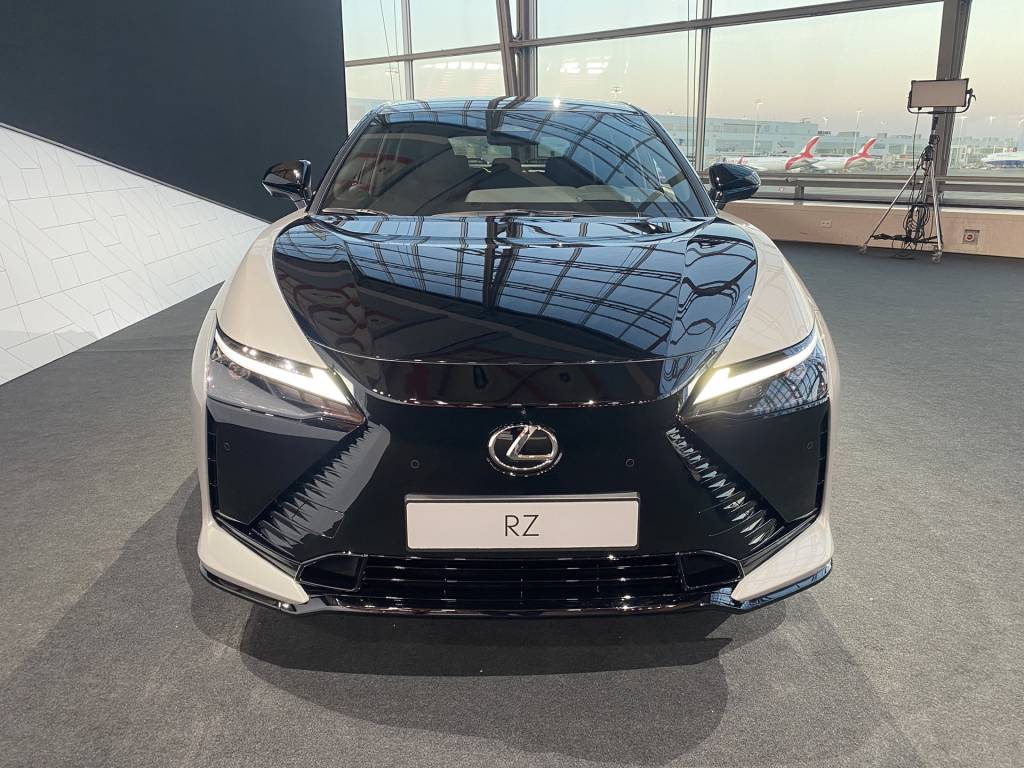
2026 Lexus RZ 550e F Sport
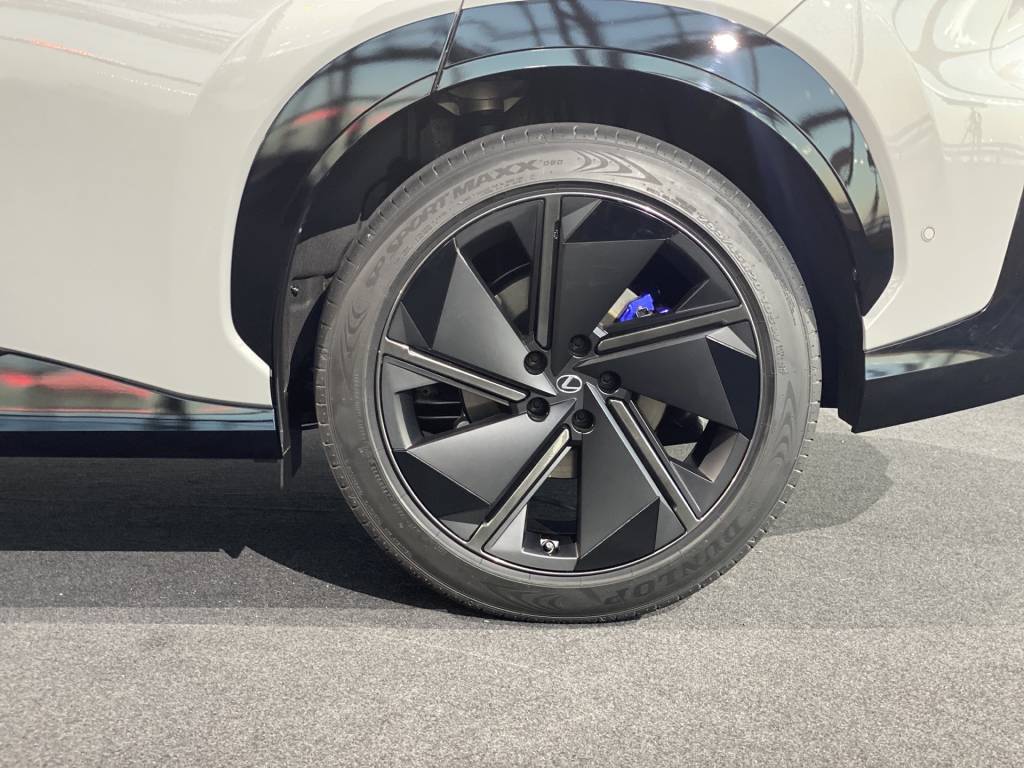
2026 Lexus RZ 550e F Sport
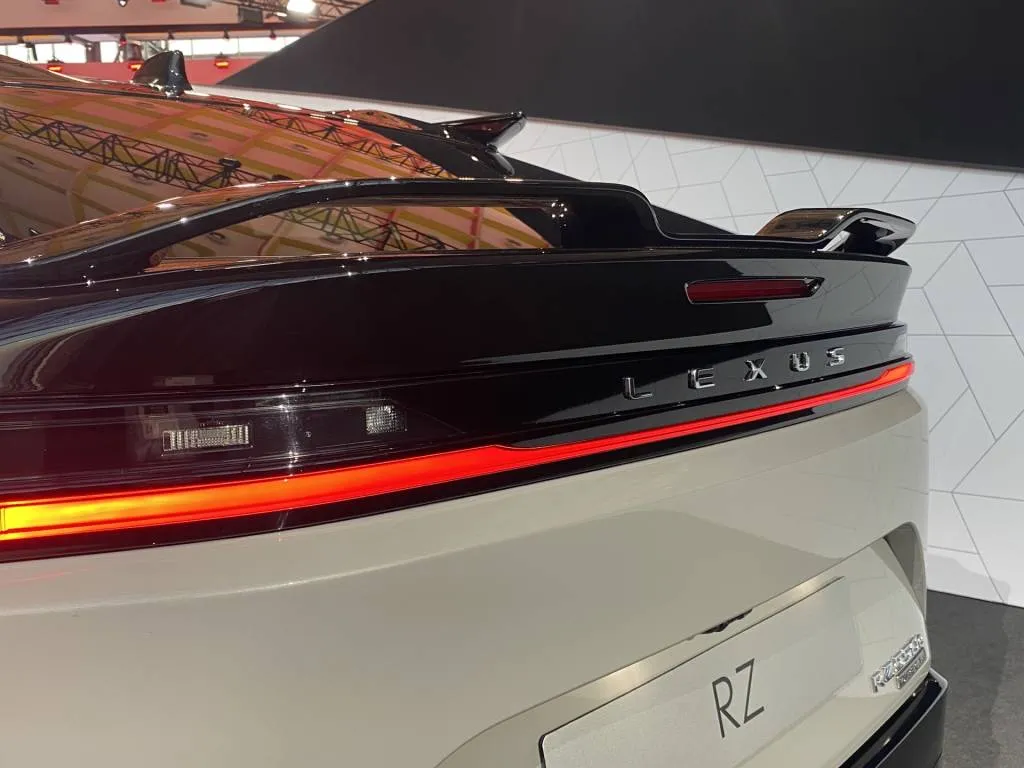
2026 Lexus RZ 550e F Sport
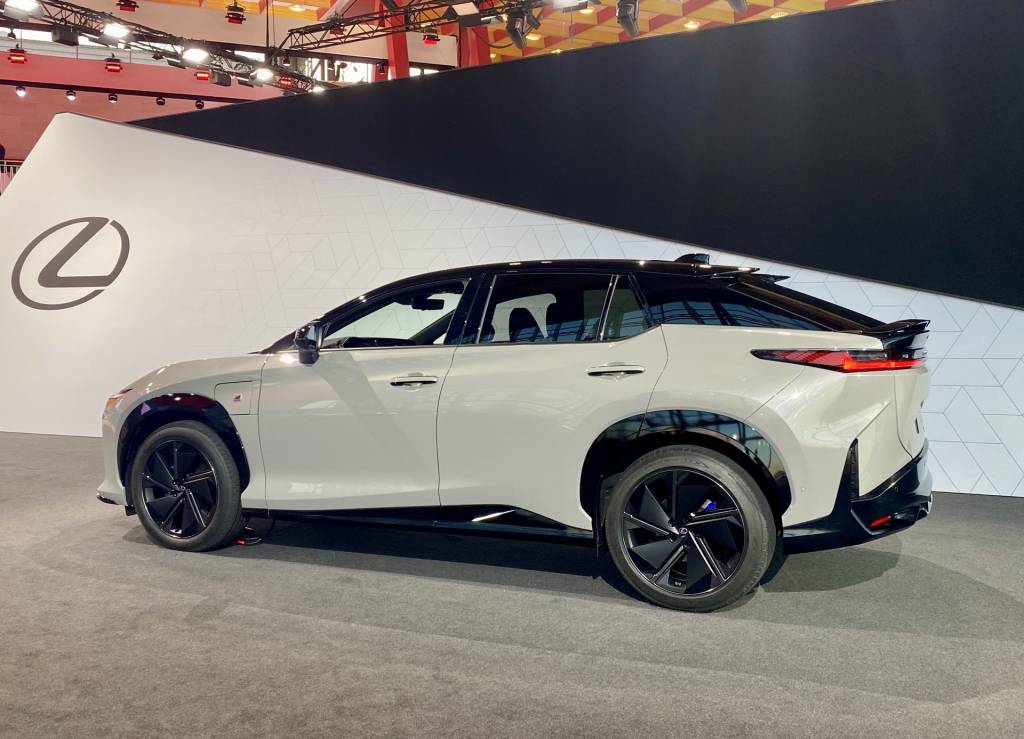
2026 Lexus RZ 550e F Sport
Lexus RZ 550e F Sport prioritizes performance
The range-topping 550e earns the F Sport badge with dual-motor all-wheel drive rated at 402 hp from two 165-kw motors. Greater efficiency in the front inverter and less parasitic losses, as well as a larger rear motor than in the existing RZ, contribute to the enhanced acceleration. Lexus stopped short of full specs, but reps said torque gets distributed more effectively between the axles to come out of turns with more gusto. The rear motor can deliver all the torque at launch or in certain situations based on speed and steering angle, and up to 80% can go to the front, typically at turn-in.
Lexus retuned the damper and spring settings to account for the increased power, and it rides on new 20-inch alloy wheels with aerodynamic resin covers that trim weight as well as smooth airflow. A more aerodynamic lower front bumper as well as more pronounced brake ducts and a racier split rear spoiler highlight the functional design tweaks.
The interior belies more significant enhancements. The steer-by-wire system we tested in the 2023 Lexus RZ 450e has been tweaked and now rolls out to the full European market; non F Sports get the existing rack and pinion steering with electrical assist and a traditional steering wheel, though mid-level models can get it optionally. There’s no mechanical connection to the front wheels, as Lexus engineers use two motors, one off the steering wheel and another at the axle, with sensors relaying information back and forth. A road bump sends feedback from the axle motor to the steering motor, and the driver turning the wheel does the opposite. The advantage of a steer-by-wire system is quicker communication with the road to keep up with the instantaneous torque distribution and quicker motor braking, as well as less vibration through the steering yoke than a mechanically connected system.
Surprisingly, we preferred its directness and simultaneous ease. Since our testing early in 2023, Lexus has increased the range lock-to-lock from 150 to 200 degrees. It’s easy to turn the yoke at low speeds, and it firms up at higher speeds. Three levels of redundancy protect the driver in case of a failure.
Exclusive to the F Sport, a “Interactive Manual Drive” employs steering-wheel mounted paddle shifters to fake shifts as in an 8-speed automatic. Engine sounds with a rev limiter and visual cues indicate when a driver should “shift,” and there’s a meter in the recessed instrument cluster.
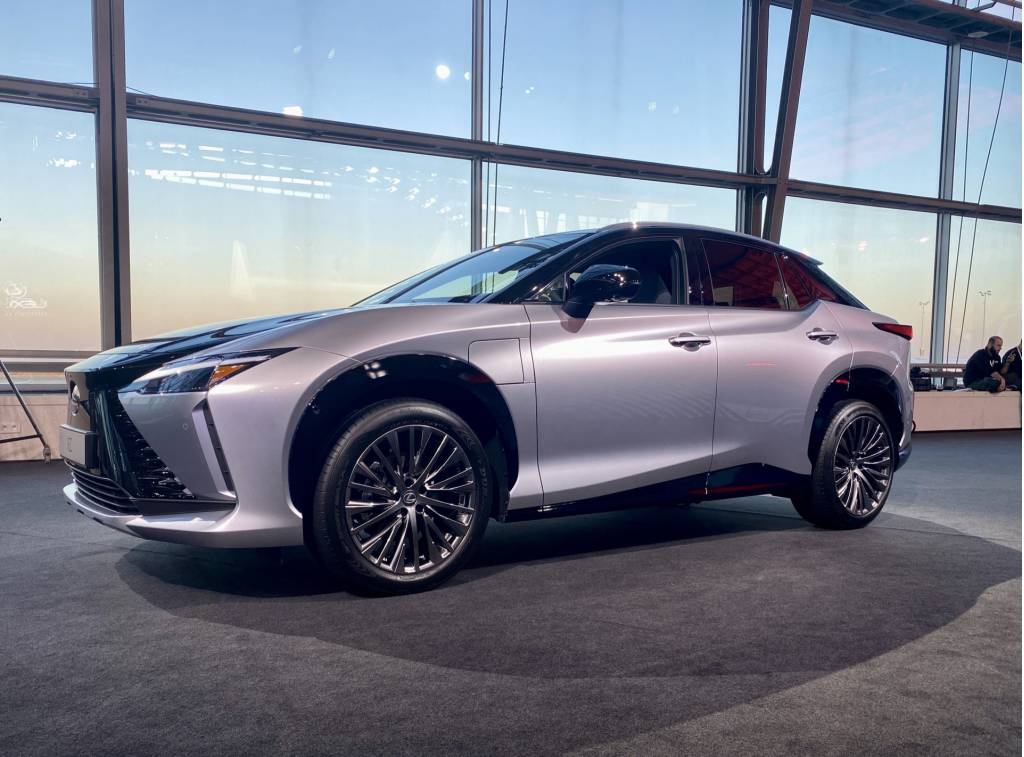
2026 Lexus RZ
Every Lexus RZ benefits from a larger battery pack
Every RZ now comes with a 77-kwh lithium-ion battery pack instead of the 71.4-kwh pack on the current 2025 Lexus RZ. More cells result in higher output with the revised front motor throughout the lineup, and water cooling for the battery and motor system also enables more sustained performance.
The RZ 350e comes with a 221-hp (165-kw) single motor and front wheel drive; the RZ 500e has dual motors and all-wheel drive with an output of 375 hp (280 kw); then there’s the 402-hp RZ 550e F Sport.
All-wheel-drive versions can now tow twice as much as before at 3,300 pounds.
Lexus says the improvements to the battery and motor systems boost range by up to 60 miles, presumably for the 350e. The 300e had a range of 266 miles on the EPA cycle, which is more rigorous and conservative than the European WLTP standard.
A new 22-kw AC onboard charger promises to quicken Level 2 charging on the road or at home, especially against the current 6.6-kw charger. Battery pre-conditioning should also boost DC fast-charging in cold weather.
Lexus added that every RZ benefits from more rigidity due to the addition of a rear brace, and the suspension has adjustments to the front and rear dampers as well as the spring rates for better stability and ride comfort. Additional soundproofing throughout the crossover should limit noise and vibrations.
The updated Lexus RZ launches in Europe this fall, and a North America rollout is expected to follow. It remains to be seen if the U.S. will get such features as steer-by-wire or the F Sport grade.
Toyota paid for airfare and lodging for Green Car Reports to attend its product showcase.

Next Mercedes-Benz electric vans to feature 800V system
Next-generation Mercedes-Benz electric vans will be able to charge faster thanks to an 800-volt electrical architecture and a 22-kw AC onboard charger.
Those are two of the details confirmed by Mercedes Thursday as the automaker was cold-weather testing these new vans in Arjeplog, Sweden, a popular spot in the Arctic Circle for such testing.
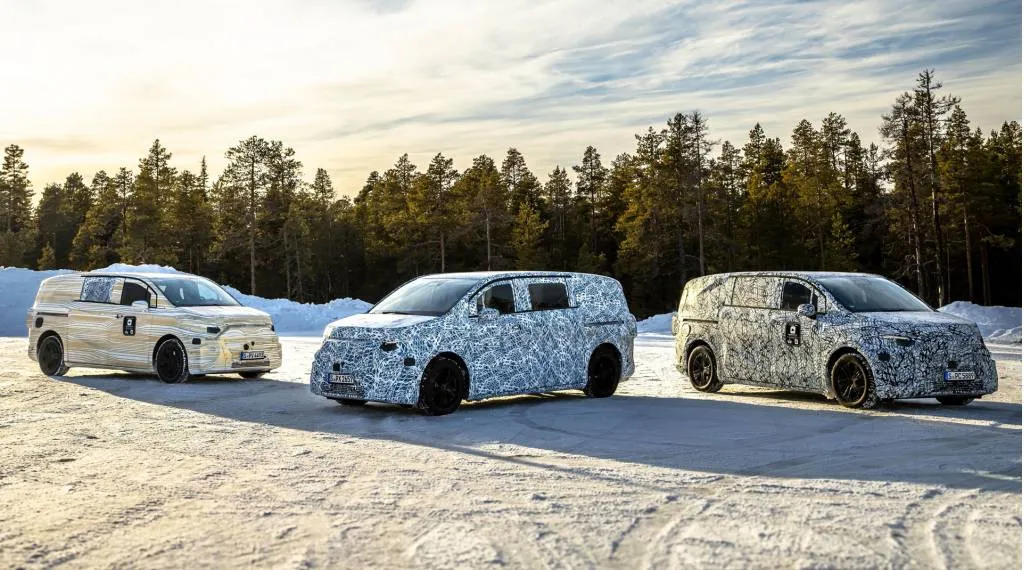
Prototype for Mercedes-Benz electric midsize van based on Van.EA platform
Current electric vans like the eSprinter are derived from internal-combustion models, but Mercedes is taking an electric-first approach with its next generation of vans. Electric models will be based on a new architecture called Van.EA, with combustion models using a derivative of that architecture called Van.CA.
In addition to more powerful charging, the Van.EA models will be available with four-wheel steering and all-wheel drive—features that are common on the automaker’s electric passenger cars but that haven’t been offered on its electric vans. All-wheel-drive models are expected to have dual motors, and single-motor models will be configured for front-wheel drive, instead of rear-wheel drive, as in the current eSprinter.
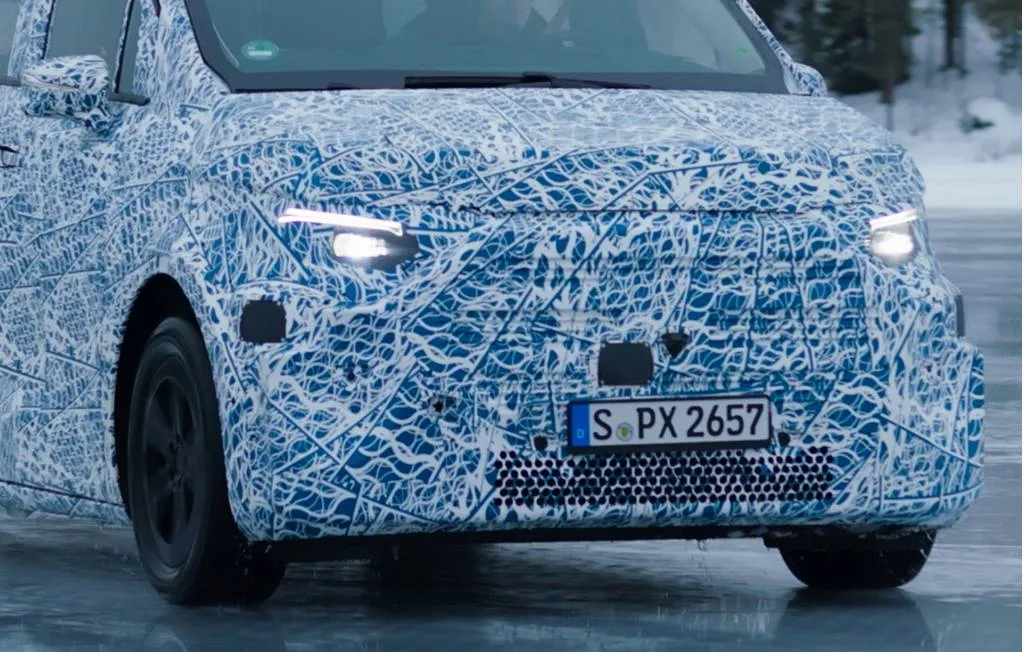
Prototype for Mercedes-Benz electric midsize van based on Van.EA platform
Mercedes plans to offer the typical array of work vehicles, plus a more luxurious model that will be previewed by a concept dubbed the Vision V. Production is scheduled to start next year.
Expect more commingling of Mercedes’ electric and internal-combustion model lines. The next-generation 2026 Mercedes-Benz CLA-Class will be offered with all-electric and 48-volt mild-hybrid powertrains. Mercedes also recently confirmed electric versions of the larger C-Class and E-Class sedans, as well as the GLC-Class crossover. A prototype electric GLC was also recently tested in Arjeplog.

2021-2022 Ford Mustang Mach-E recalled third time for power loss issues
Ford is again recalling 2021-2022 Mustang Mach-E electric vehicles because of an issue with a key propulsion-system component that could cause a loss of drive power.
The core issue is that battery main contractors can overheat after DC fast-charging or when the driver floors it too many times in a row. That can lead to “arcing and deformation of the electrical contact surfaces, which can result in a contractor that remains open or a contractor that welds closed,” according to the NHTSA.
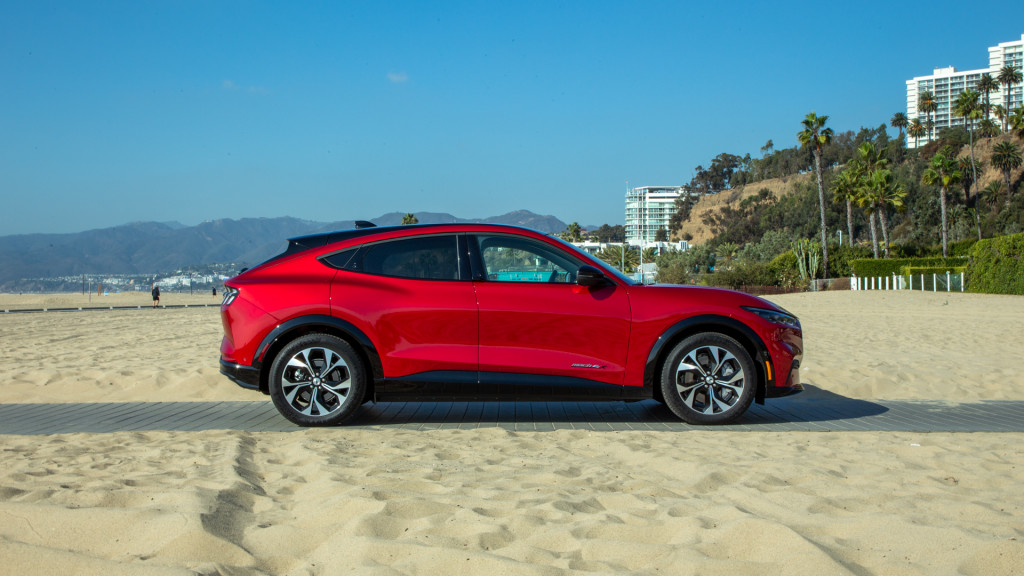
2021 Ford Mustang Mach-E
The same issue led Ford to halt Mach-E deliveries in June 2022. Under that campaign, Ford delivered an over-the-air fix containing revised software for two control modules. It then issued a second recall that involved physical replacement of some electrical components in a Mach-E vehicles with the extended-range battery pack.
This third recall covers a small subset of vehicles—234—that did not receive the correct software remedy under the first recall. Ford told the NHTSA that, although successful installation was recorded, the correct software may not in fact have been install on these vehicles. Ford added that it’s unaware of any crashes or injuries related to these vehicles remaining in circulation without the software fix.
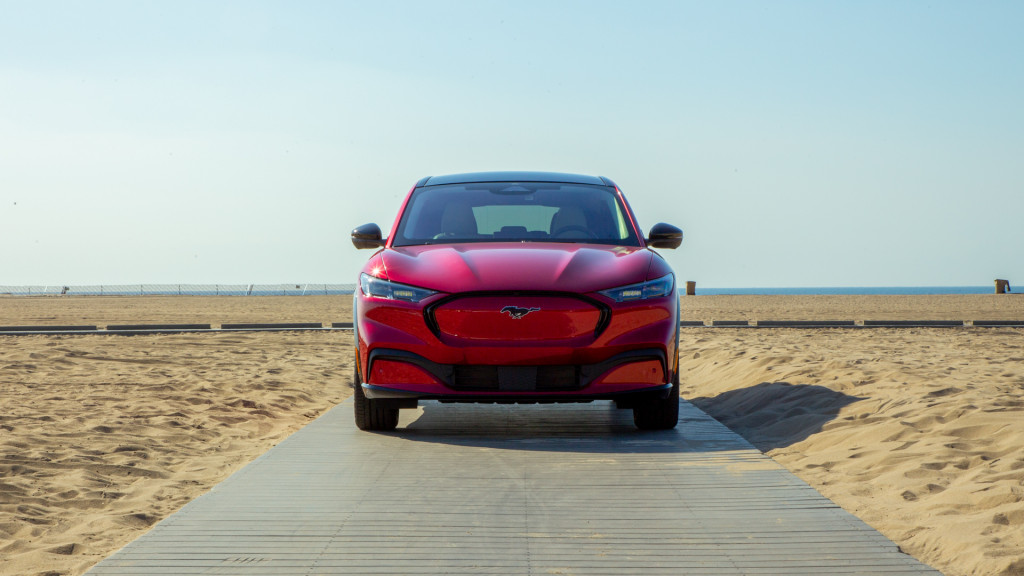
2021 Ford Mustang Mach-E
In previous recalls, Ford said contractor failure can lead either the vehicle not starting after it’s cycled off, or to the vehicle displaying “Stop Safely Now” and coasting to a stop—although power brakes, steering, and accessories will remain functional.
Owners will have to take their cars for dealerships to have the correct software installed, free of charge. Ford plans to mail owner notification letters on April 14. Owners can also call Ford’s customer service department at 1-866-436-7332 for more information. Ford’s reference number for this recall is 25S14.

Study: Only 12% of EV owners consider going back to gasoline
Once car shoppers get an electric vehicle, the odds are very low of them returning to any kind of model that relies on a gas pump.
That’s one of the conclusions of J.D. Power’s 2025 U.S. Electric Vehicle Experience Ownership Study, which asked 6,164 owners of EVs and plug-in hybrids from model years 2024 and 2025 about their first year of ownership. Those respondents were surveyed from August through December 2024.
Of the EV owners surveyed, 94% said they were likely to consider purchasing another EV as their next car. And only 12% said they were likely to consider replacing their EV with a vehicle with an internal-combustion engine—including a hybrid or plug-in hybrid.
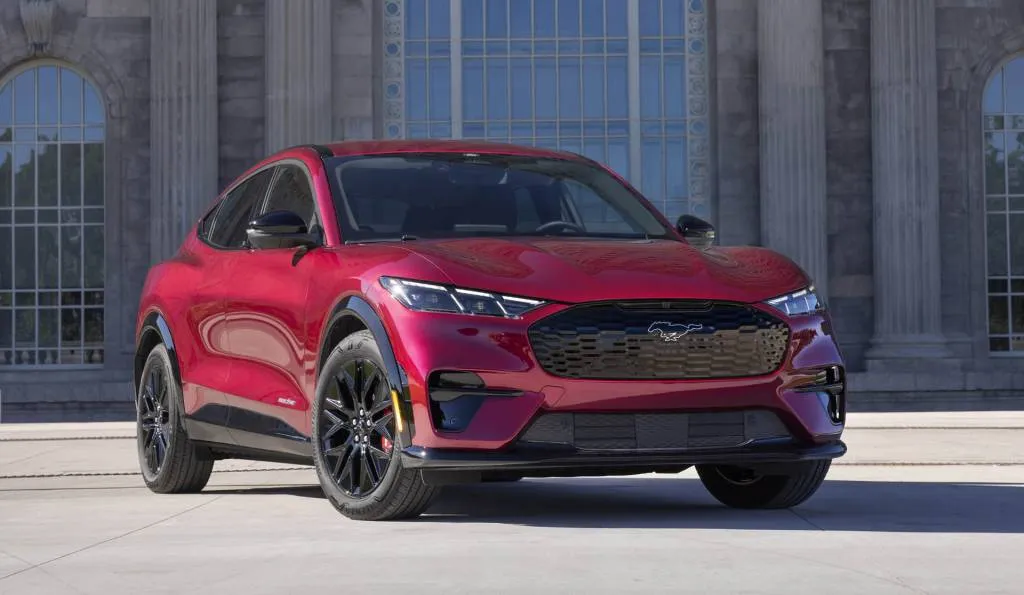
2025 Ford Mustang Mach-E (Premium with Sport Appearance Package)
Overall, despite all the policy and messaging suggesting a pivot away from EVs, the study found EV satisfaction on the upswing, after two years in which owners were particularly unhappy with areas including the tech and interface, and public charging.
Among mass-market EV owners, satisfaction was up 86 points year over year, to 725 points on a scale of 1,000. J.D. Power attributes that to continued charging infrastructure buildout and the number of EV brands embracing the NACS charging standard and giving their customers access to the Tesla Supercharger network.
The study also showed greater satisfaction among plug-in hybrid owners. The average score for premium plug-in hybrids—a new subset considered in this year’s study—was 741, higher than mass-market EVs, and only 15 index points lower than premium EVs. That’s a significant improvement in the overall picture for plug-in hybrids compared to previous J.D. Power studies.
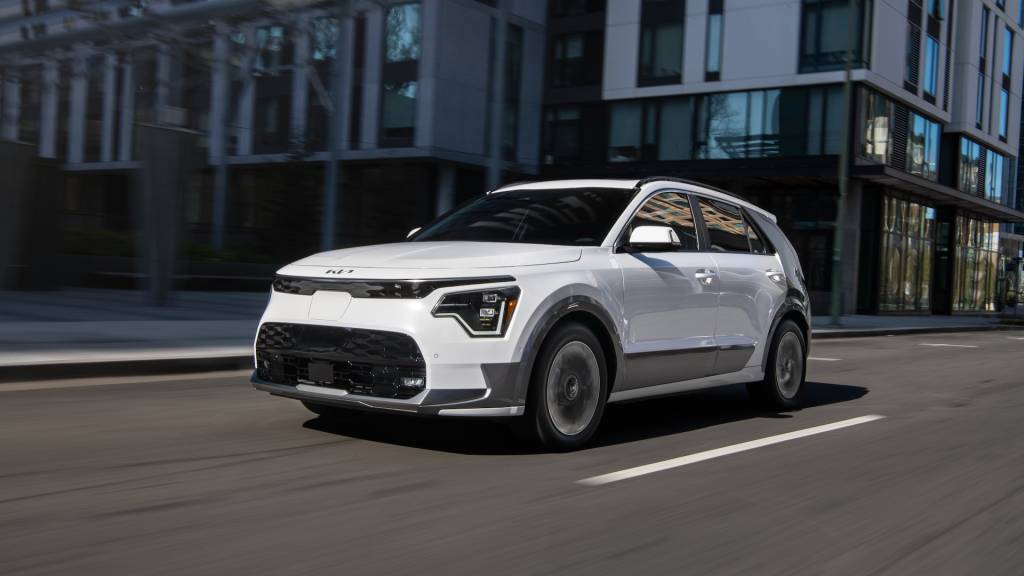
2025 Kia Niro EV
The shift away from Tesla is skewing sales results that otherwise show significant gains among EV sales for most other brands, and despite Tesla’s nosedive, overall EV sales may gain 3% of market share this year.
In places like Florida or Texas, whether those states have favorable EV policy or not, this very high rate of owners looking to trade in for another EV is especially good news.
